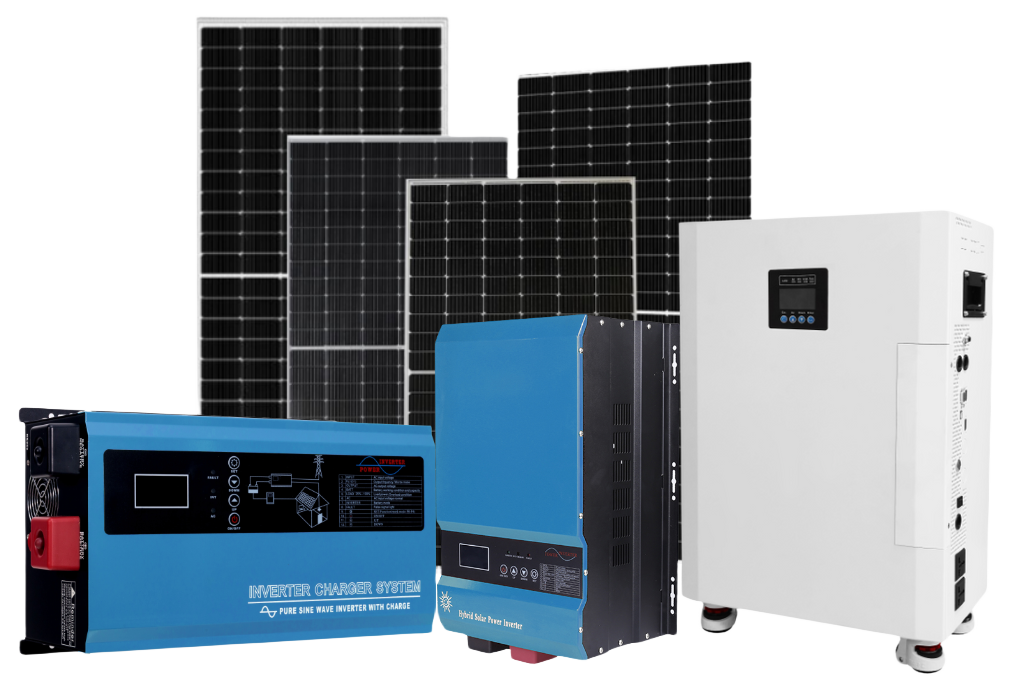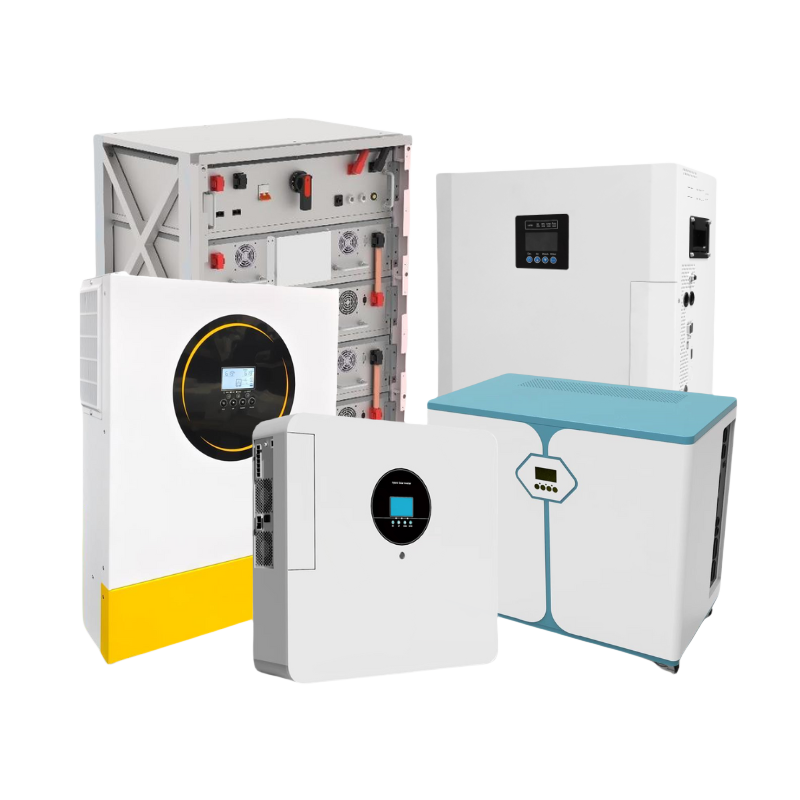Introduction
Solar-powered umbrellas are a brilliant fusion of technology and convenience, bringing sustainable energy into our backyards and patios. However, even the most durable solar panels may eventually need replacement due to wear and tear, damage, or efficiency loss over time.
If you’re facing issues with your solar umbrella, fear not. This guide will walk you through the process of solar panel replacement, ensuring your umbrella continues to provide both shade and power efficiently.
Understanding the Need for Replacement
Solar panels on umbrellas, though celebrated for their low-maintenance nature and durability, are nonetheless susceptible to a range of environmental and operational factors that can compromise their functionality.
Recognizing the signs that signal the need for replacement is crucial for maintaining the optimal performance of your solar-powered umbrella.
1.Wear and Tear
The relentless exposure to elements such as intense sunlight, rain, snow, and wind can cause gradual but significant degradation of solar panels.
UV rays can weaken the panel’s surface, while fluctuating temperatures can cause materials to expand and contract, leading to micro-cracks or delamination.
Over time, these factors can diminish the efficiency and lifespan of the solar panels.
2. Physical Damage
Solar panels are relatively robust but are not impervious to physical harm.
Accidental impacts, falling branches during storms, or even mishandling can lead to cracks or fractures in the panel’s surface.
Such damage not only affects the aesthetic appeal but can severely impact the panel’s ability to capture and convert sunlight into electricity.
3. Performance Deterioration
Like all tech components, solar panels have a lifespan. Over time, their efficiency in converting sunlight into energy diminishes—a phenomenon known as degradation.
Factors contributing to performance deterioration include the quality of the solar panel, the cleanliness of the surface (as dirt or bird droppings can block sunlight), and the technology used in the panel itself.

4. Technological Advancements
The solar industry is rapidly evolving, with new advancements leading to more efficient, durable, and cost-effective panels.
Even if your current panels are functioning adequately, upgrading to newer models can offer improved performance, better resistance to environmental factors, and potentially, a more aesthetic integration with your umbrella design.
5. Energy Needs Change
If the energy consumption of your umbrella’s features has increased—perhaps due to the addition of more lights or charging ports—the current solar panel may no longer suffice.
In such cases, replacing the panel with one that has a higher capacity can ensure that your umbrella continues to meet its energy requirements efficiently.
6. Warranty Expiration
If your solar panel is nearing or has surpassed its warranty period, it might be a prudent decision to replace it.
Even if the panel hasn’t shown significant signs of wear or degradation, post-warranty replacements can help avoid the sudden inconvenience of a non-functional panel and potential costs associated with out-of-warranty repairs or replacements.
Understanding these factors and regularly inspecting your solar panels can help you determine the optimal time for replacement, ensuring that your solar-powered umbrella continues to function as a reliable, eco-friendly source of energy and comfort.

Assessing the Solar Panel
Proper assessment of your solar panel is a critical step before proceeding with the replacement process. It ensures that you accurately identify the issues and understand the extent of the damage or inefficiency.
Here are some expanded strategies and methods to thoroughly assess the condition and performance of your solar panel.
1.Visual Inspection
- Surface Condition: Apart from looking for visible cracks and discoloration, examine the panel for signs of delamination (layers peeling apart) or browning, which can indicate overheating issues.
- Frame and Mounting: Check the integrity of the frame and the mounting brackets. Loose or damaged mounting can lead to unstable panels, which may further lead to damage or suboptimal positioning for sunlight exposure.
- Wiring and Connections: Inspect all visible wiring and connections for signs of wear, corrosion, or damage. Faulty wiring can be a potential safety hazard and can significantly impact the panel’s performance.
2. Performance Check
- Energy Output Measurement: If possible, use a multimeter to measure the voltage and current output of the panel during peak sunlight hours. Compare these readings with the specifications provided by the manufacturer to gauge if the panel is performing as expected.
- Functionality of Connected Features: For solar umbrellas with additional functionalities like lighting or USB charging ports, test these features extensively. Inconsistent or non-functional features might indicate an issue with the solar panel’s energy output.
3. Shading Analysis
- Check for Obstructions: Ensure that the panel’s surface is free from obstructions like leaves, bird droppings, or dust, as these can block sunlight and reduce efficiency.
- Surrounding Environment: Assess the surrounding area for any new structures, trees, or installations that might be casting shadows on the panel, especially during peak sunlight hours.

4. Professional Assessment
- Consult an Expert: If the visual inspection and performance checks do not conclusively determine the panel’s condition, consider consulting a solar panel professional. They can perform a more thorough inspection, including an IV (current-voltage) curve tracing, to identify any hidden issues.
5. Temperature Check
- Hot Spots: Use an infrared thermometer or camera to check for hot spots on the panel’s surface. Hot spots can indicate malfunctioning cells or issues with the panel’s internal connections, often leading to reduced efficiency and potentially further damage if left unchecked.
6. Historical Performance Data Analysis
- If your solar umbrella’s system tracks performance history, review the data for any patterns of decreased efficiency or sudden drops in energy production. This can help pinpoint when the issue started and its possible causes.
By combining these assessment methods, you can gain a comprehensive understanding of your solar panel’s condition and performance. This information is crucial in making an informed decision about whether a replacement is necessary or if repairs might suffice.

Choosing the Right Replacement Panel
Selecting the appropriate solar panel for your umbrella is a decision that requires careful consideration of several factors. Ensuring compatibility, fitting the umbrella’s design, and opting for quality are crucial, but there are more nuances to this choice.
1.Compatibility
When evaluating compatibility, it’s not just about matching voltage and power.
Delve deeper into the electrical intricacies, ensuring the panel’s current and maximum power point harmonize with your system’s specifications to avert potential inefficiencies or damage.
Additionally, the connector type warrants attention. The replacement panel should effortlessly integrate with your existing setup, negating the need for cumbersome adapters or complex rewiring.
2. Size and Shape
Before making a choice, measure your umbrella’s designated panel space meticulously.
The new panel should fit snugly, without impeding the umbrella’s functionality or detracting from its design.
Moreover, the aesthetic aspect of the panel plays a significant role. A panel that visually complements your umbrella can elevate its overall charm and appeal.
3. Quality
The quality of the panel is a cornerstone in this decision-making process.
Seek out panels crafted from superior, resilient materials capable of withstanding environmental adversities, from the relentless UV rays to fluctuating temperatures.
The panel’s resistance to water and other weather-induced challenges is a critical factor, as is the assurance of a solid warranty and dependable customer support, which together safeguard your investment.

4. Efficiency
In the realm of efficiency, the panel’s energy conversion rate is a testament to its performance.
Opt for a panel that promises higher efficiency, ensuring maximum electricity generation, particularly beneficial in locales with modest sun exposure.
The temperature coefficient is another technical nuance to ponder; a lower coefficient indicates better performance in hotter climates, ensuring your panel remains efficient when the mercury rises.
5. Brand Reputation and Reviews
Choose brands that boast a commendable track record of reliability and customer satisfaction.
Scour through user reviews and ratings to gain a realistic perspective of the panel’s performance and durability, insights that transcend mere specifications.
6. Cost-effectiveness
Panels of superior quality may command a higher initial investment, but their longevity, enhanced efficiency, and minimal maintenance demands can culminate in substantial savings over time.
Be on the lookout for financial incentives or rebates that can alleviate the upfront costs, making your transition to a solar-powered umbrella more economical.
By taking these factors into account, you can make a well-informed decision when choosing a replacement solar panel, ensuring that it meets your needs in terms of performance, durability, aesthetics, and overall value.

Step-by-Step Replacement Guide
Replacing a solar panel on an umbrella is a task that, with the right approach and attention to detail, can be carried out effectively.
Here’s an expanded, step-by-step guide to help you navigate through the process smoothly.
Step 1: Preparation and Safety Measures
- Stabilize the Umbrella: Ensure that the umbrella is securely closed and anchored. This prevents any unexpected movements or accidents during the replacement process.
- Power Down: If your solar umbrella system has a power switch or is connected to any power source, make sure to turn it off to avoid any electrical hazards.
- Gather Tools and Materials: Assemble all necessary tools (screwdrivers, pliers, etc.) and the replacement solar panel. Having everything within reach will streamline the process.
Step 2: Removing the Old Panel
- Accessing the Panel: Carefully remove any protective casing or covers that shield the panel. This might require loosening screws or unclipping fasteners.
- Document the Setup: Take clear photos of the existing setup, focusing on wire connections and panel placement. This will serve as a valuable reference when installing the new panel.
- Panel Removal: Gently detach the old panel. If it’s screwed in, remove the screws and keep them if they’re needed for the new panel. If it’s connected by snap-on connectors, carefully release them.
Step 3: Disconnecting Wires
- Identify Connections: Note the color coding or labeling of wires and their respective connection points.
- Detach with Care: Using appropriate tools, carefully disconnect the wires. If they’re tightly secured or have protective insulation, gently use pliers or wire strippers as needed.
Step 4: Attaching the New Panel
- Clean the Area: Wipe the mounting surface clean to ensure a good, clean contact for the new panel.
- Positioning: Align the new panel in the correct orientation as noted in your pre-removal photos.
- Securing the Panel: Attach the panel using the designated method (screws or snap-on connectors). Ensure it’s firmly in place but avoid over-tightening, which might damage the panel or its frame.

Step 5: Reconnecting Wires
- Reference Your Photos: Use the photos taken earlier to correctly match the wire connections.
- Secure Connections: Reattach the wires to their respective terminals. If your system requires it, use wire nuts or electrical tape to ensure a secure and safe connection.
Step 6: Testing the Setup
- Initial Test: In daylight, check if the solar panel’s indicator light (if available) signals proper functioning.
- Functionality Check: Test the connected features like lighting or USB ports to confirm the new panel is effectively powering them.
- Adjustments if Necessary: If something isn’t working as expected, recheck your connections and ensure everything is properly aligned and secured.
Step 7: Post-Replacement Cleanup
- Tidy Up: Safely dispose of the old panel and any waste materials. Store your tools and any leftover materials.
- Inspect the Site: Ensure the area around the umbrella is clear of any small parts or debris that could be a hazard.
By following these detailed steps, you can replace your umbrella’s solar panel confidently, ensuring a smooth transition to your new, efficient solar panel.
This not only extends the life of your solar umbrella but also contributes to a sustainable lifestyle.

Troubleshooting Common Issues
After replacing your solar panel, ensuring its optimal functionality is paramount. However, even the most meticulously executed replacements can encounter issues.
Here’s a comprehensive guide to troubleshooting some common problems, ensuring your solar umbrella continues to operate efficiently:
1.No Power
- Connection Check: Beyond securing connections, inspect for any loose or corroded contacts. Corrosion can impede the flow of electricity, so cleaning contacts might be necessary.
- Battery Assessment: If your umbrella is equipped with a battery, assess its condition. Batteries have a limited lifespan and may need replacement or a thorough recharge. Using a multimeter to check the battery’s voltage can give you a clear picture of its health.
- Solar Panel Angle: Ensure the panel is angled optimally towards the sun. An incorrect angle can significantly reduce the panel’s ability to generate power.
2. Inconsistent Performance
- Panel Cleaning: Regularly clean the panel to remove dirt, dust, or bird droppings. A dirty panel can drastically reduce efficiency. Use a soft cloth and mild detergent; harsh chemicals can damage the panel’s surface.
- Shading Analysis: Examine the installation throughout the day. Shadows that weren’t there in the morning might appear later and can significantly impact the panel’s performance. Pruning nearby foliage or relocating the umbrella might be necessary.
- Check for Panel Hotspots: Hotspots can occur due to shading or internal panel issues and can lead to reduced performance. These can sometimes be visible as darker areas on the panel.
3. Water Damage
- Waterproofing Measures: If the panel is not inherently water-resistant, consider applying a waterproof coating or sealant that’s designed for solar panels.
- Structural Integrity: Ensure the housing of the panel and all junction boxes are intact and properly sealed to prevent water ingress.
- Moisture Check: After exposure to rain, check for any signs of moisture accumulation in or around the panel. Moisture can lead to short circuits or corrosion over time.
4. Electrical Issues
- Controller and Regulator Check: If your system uses a charge controller or regulator, ensure it’s functioning correctly. These devices manage the flow of electricity and protect batteries from overcharging.
- Cable Integrity: Inspect all cables for signs of wear, fraying, or animal bites. Damaged cables can cause poor performance or safety hazards and should be replaced promptly.

5. Environmental Factors
- Temperature Considerations: Extreme temperatures can affect battery performance and the efficiency of the solar panel. If you’re in an area with high temperatures, ensure your panel and battery are rated to withstand the heat.
- Wind and Stability: For umbrellas in windy areas, ensure the mounting and structure are secure. Vibrations or movements can lead to loose connections or damage.
By systematically addressing these potential issues, you can mitigate problems and ensure your solar-powered umbrella remains a reliable source of shade and energy.
Regular maintenance, coupled with vigilant monitoring, will prolong the lifespan of your solar panel and enhance the overall enjoyment of your outdoor space.
Conclusion
Replacing the solar panel on your umbrella is more than just a quick fix; it’s an investment in your comfort and your commitment to sustainable living. With the right tools, a bit of knowledge, and some patience, tackling this project can be a deeply satisfying DIY endeavor.
Remember, the key to longevity in solar-powered devices lies in regular maintenance and the timely replacement of parts.
By meticulously following this guide, your solar umbrella will not only stand ready to provide sustainable energy but also extend its inviting shade for many sunny days to come.
In your journey towards a more sustainable and comfortable outdoor space, SolarCtrl stands as your dedicated partner. With our commitment to quality, innovation, and customer satisfaction, SolarCtrl offers an extensive range of solar solutions designed to meet your every need.
Ready to elevate your outdoor living with top-tier solar solutions? Visit SolarCtrl today and take the first step towards a brighter, greener tomorrow. Your journey to sustainability is just a click away. Explore SolarCtrl Now.





















